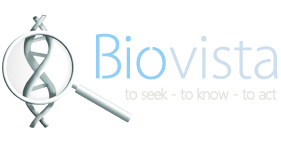Biovista partners with biopharma companies, patient advocacy organizations, hospitals and other stakeholders in the healthcare space to create solutions that meet a range of drug development, pipeline management and drug life cycle challenges.
From finding new or better cures through drug repositioning, to selecting LCM options and addressing clinical hold orders, our B2B Services offer a reliable tool to support management decisions on single assets or your pipeline as a whole.
Our B2B Services combine predictive, mechanism-of-action modeling with in vitro/vivo verification capabilities for robust benefit/risk profiling in a translational medicine context. We are able to deliver significant value at reduced cost and in dramatically shorter time frames than is normally the case.
Biovista’s services have been successfully applied in:
- Drug Repositioning and Loss of Exclusivity (LoE): identifying potential novel applications of existing drugs, this service helps to further exploit existing IP assets, inform the due diligence evaluation of an in-licensed compound, fill the company pipeline, complete gaps in IP estates and protect against competitor actions.
- Benefit/Risk Assessment: predicting potential unknown or unexpected Adverse Events (AEs) Biovista can help with go/no-go decisions on new compounds, clinical trial design or with re-labeling requirements for existing drugs.
- Withdrawals and Clinical Hold situations: providing plausible explanations for observed and an unexpected AE in a Phase II or III trial, Biovista can help inform a Risk Mitigation Plan or suggest alternative development avenues, and under certain circumstances provide analysis on confounding indications that may help free a compound from its clinical hold status.
Biovista B2B Services are directly relevant to a number of life-cycle management options.
| Life-Cycle Management Options | B2B Services Usage |
|---|---|
| New Indications | Application to generic, parked as well as investigational drugs. See our Drug Repositioning Service |
| Reformulations | Reformulation of a repositioned drug significantly strengthens its IP position. Applicable to generics companies or established products divisions of pharma companies. We seek partnerships with generics companies to create new well differentiated products. |
| Combination Drugs | Create the profile of a combination therapy and identify indications for that combination. Identify an appropriate combination for a disease of interest or a second compound to enhance the performance of a drug of interest in an indication of interest. See our Combination Therapies Service |
| OTC Switching (Rx-to-OTC) | This task is treated just like any repositioning task. The emphasis here is on speed of execution due to first market mover benefits. See our Drug Repositioning Service |
| Patent Protection Strategies | Identifying uses for assets of interest can be used both in a defensive and in an offensive capacity. See our Drug Repositioning Service |
| Developing New Markets for Products | Yes if the indication is market specific e.g. a rare disease of high prevalence in a overseas market. |
| Increasing and Refocusing R&D Expenditure | Refocus R&D expenditure by pointing to promising research areas where high yields may be expected. See our Drug Repositioning Service |
| Reducing Drug Development Time | Our B2B sevices can form the basis of a systematic effort. See our Drug Repositioning Service |
| Early-Stage Lifecycle Management | Enhanced knowledge of development opportunities sooner rather than later supports early-stage LCM as well as a better understanding of pipeline value fluctuations. |
- Save time and money by producing strategic level product line recommendations that would normally require multiple FTEs and several months of R&D, in as little as a few months.
- Identify unique IP opportunities that may add years of exclusivity to drugs in development, prevent Loss of Exclusivity for existing drugs and provide extension of exclusivity strategies for drugs coming off patent.
- Support drug and candidate “go/no-go” decisions by identifying context sensitive information that is non-obvious (not reported in the available data sources) yet potentially highly relevant to the question at hand.
- Access an orthogonal and complementary approach to existing tools (in vitro/vivo experiments, software simulators, data mining etc.) providing additional confidence to decisions.
- Present proactive pharmacovigilance and pharmacoepidemiology strategies for testing wet-lab or animal results for highly problematic safety issues.
- Provide biological explanations for unexpected AEs during a trial or once a product is on the market, that may provide a fast track for rescue from regulatory sanctions
- Offer additional peace of mind to decision makers who need to be assured that ‘no-stone has been left unturned’ through comprehensive analysis of public and proprietary data.
For more information
Select a service to find out more or send an email directly to ps{at}biovista.com.

